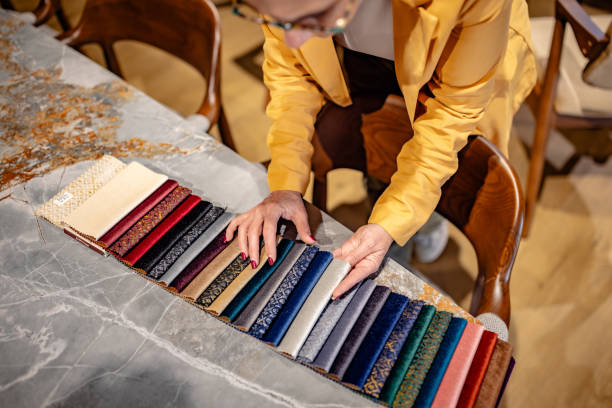
When it comes to abayas, style is only half the story the fabric you choose can make or break your comfort, durability, and overall look. Whether you’re buying your first abaya, adding to your modest fashion wardrobe, or sourcing abayas for your boutique, understanding abaya fabrics is essential. The right abaya material not only enhances your style but also ensures you stay comfortable in different climates and occasions.
This guide walks you through the most popular abaya fabric types, their benefits, and how to choose the perfect one for your needs.
Why Fabric Matters in an Abaya
Many people focus on the design, color, or embellishments of an abaya, but the fabric is the foundation. The right fabric:
- Affects comfort – Lightweight and breathable fabrics keep you cool, while thicker fabrics offer warmth.
- Defines the drape – A soft chiffon flows differently than a structured crepe.
- Determines maintenance – Some abaya fabrics are machine-washable; others need delicate care.
- Influences style – A luxurious satin looks perfect for evening wear, while cotton blends are great for daily wear.
Choosing the wrong abaya material could mean overheating in summer, feeling uncomfortable during prayer, or your abaya losing shape after a few washes.
Popular Abaya Fabric Types
Here’s a breakdown of the most commonly used abaya fabrics and what makes them special.
1. Nidha Fabric – The Luxury Choice
- Texture: Soft, smooth, and lightweight.
- Best for: Formal events, weddings, and high-end abayas.
- Why choose it: Nidha is a premium abaya fabric often used for designer collections. It’s breathable yet elegant, making it ideal for warm climates.
- Care tip: Hand wash or dry clean to maintain its smooth finish.
2. Crepe Fabric – The Versatile Favorite
- Texture: Slightly grainy, medium weight.
- Best for: Daily wear and semi-formal abayas.
- Why choose it: Crepe offers durability, wrinkle resistance, and a graceful fall. It’s a versatile abaya material that works for both everyday use and special occasions.
- Care tip: Machine washable on a gentle cycle, but avoid high heat.
3. Chiffon – Lightweight & Flowing
- Texture: Sheer, airy, and flowy.
- Best for: Layered abayas, evening wear, and summer styles.
- Why choose it: Perfect for lightweight abaya fabrics, chiffon drapes beautifully and adds a feminine touch. Often used as an overlay on solid fabrics.
- Care tip: Hand wash in cold water to prevent fraying.
4. Satin & Silk – For Glamorous Occasions
- Texture: Smooth, shiny, and luxurious.
- Best for: Weddings, parties, and special events.
- Why choose it: These luxurious abaya fabrics instantly elevate your look, making them perfect for formal occasions.
- Care tip: Dry clean to maintain sheen and prevent damage.
5. Jersey – Stretchy & Comfortable
- Texture: Soft, stretchy, and breathable.
- Best for: Casual wear, travel, and sports abayas.
- Why choose it: Jersey abaya material offers maximum comfort and flexibility, ideal for active lifestyles.
- Care tip: Machine wash with similar colors; avoid tumble drying to maintain elasticity.
6. Linen & Cotton – Natural & Breathable
- Texture: Soft, matte, and natural fibers.
- Best for: Summer abayas, casual wear.
- Why choose it: Cotton and linen are breathable abaya fabrics that keep you cool in hot weather while being easy to maintain.
- Care tip: Machine wash cold and iron on low heat.
7. Georgette – Elegant & Drapey
- Texture: Lightweight, slightly crinkled.
- Best for: Party abayas and layered looks.
- Why choose it: Georgette offers a flowy abaya fabric option with a semi-sheer effect, making it perfect for layering.
- Care tip: Gentle hand wash to preserve texture.
How to Choose the Best Abaya Fabric for Style & Comfort
When selecting your abaya material, think beyond just appearance. Here are the key factors to consider:
1. Climate & Season
- Hot Weather: Opt for chiffon, linen, cotton, or lightweight crepe.
- Cold Weather: Go for thicker crepe, jersey, or double-layer nidha.
2. Occasion
- Daily Wear: Cotton blends, jersey, crepe.
- Special Events: Satin, silk, chiffon overlays, or premium nidha.
- Work/Professional: Matte crepe or lightweight wool blends.
3. Comfort & Practicality
If you’ll be wearing your abaya for long hours, choose breathable abaya fabrics that are easy to move in. Stretch fabrics like jersey are ideal for flexibility.
4. Maintenance
Some fabrics like satin and silk require dry cleaning, while cotton and jersey are low-maintenance. Choose based on your lifestyle.
5. Budget
Luxury fabrics like nidha and silk cost more, but they offer unmatched elegance. Cotton and jersey are budget-friendly yet comfortable.
Tips for Abaya Fabric Care
- Always read the label for washing instructions.
- Avoid direct sunlight for drying to prevent fading.
- Store in a cool, dry place to maintain fabric quality.
- For delicate fabrics, use a garment steamer instead of an iron.
Final Thoughts
Choosing the best fabric for your abaya is a balance of style, comfort, and practicality. From the airy elegance of chiffon to the everyday ease of jersey, every abaya material has its purpose. If you’re shopping for yourself, think about the climate, occasion, and care routine. For abaya wholesalers or boutique owners, offering a variety of abaya fabric types ensures you meet the needs of every customer.
A well-chosen fabric doesn’t just enhance style—it transforms the entire wearing experience. The next time you shop or design an abaya, remember: fashion starts with fabric.

